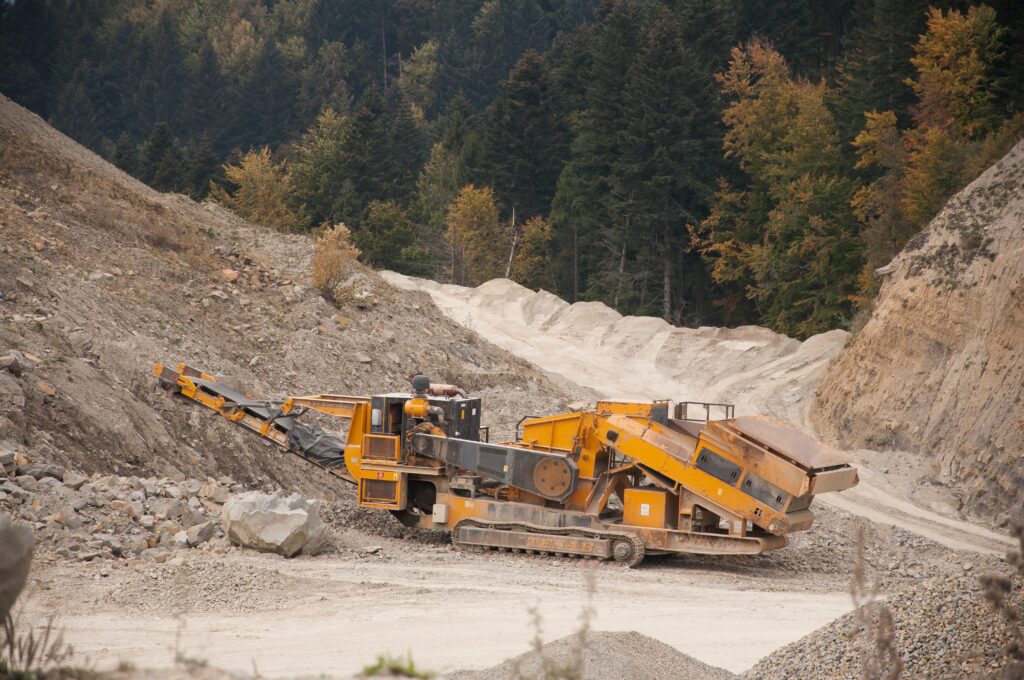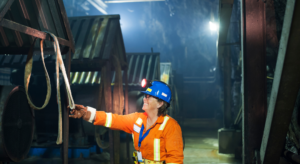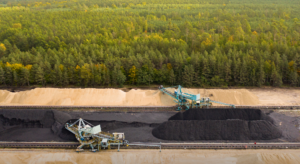The integration of new technologies like remote operations, etc. is rapidly transforming the mining industry. This transformation into a highly connected, data-driven industry also creates cyber risks in mining’s digital transformation. In the past few years, major mining companies around the world have fallen victim to cyberattacks. It ranges from targeted ransomware shutdowns of facilities to the theft of sensitive operational data. As per the Global Information Security Survey, over 55% of participants are worried about the cyber threats that might approach them.
As a result, experts warn that as mines become increasingly reliant on networks, cyberattacks have the potential to cripple operations. It can also endanger human safety and inflict serious environmental and financial damage.

Mining companies cannot afford to leave cybersecurity as an afterthought. They must take a proactive and strategic approach to cyber risks in mining’s digital transformation. It will help in understanding and minimizing cyber risks across their organizations and operating environments. Moreover, robust cybersecurity practices must be implemented that match the level of technological innovation.
In this article, we explore practical steps mining companies should take to defend their connected operations from emerging cyber threats and more. So, by learning from early attacks on mines and best practices from other industries, miners can digitally transform their operations without fear of disruption.
What are the cyber threats to the mining industry?
The mining industry faces distinct cyber risks. This is due to its unique operational environments and technology infrastructure. So, some key threats include:
- Ransomware attacks that encrypt critical systems
Mining operations are highly vulnerable to ransomware. These are designed to shut down industrial control systems and extract payouts. So, with 24/7 production, even brief downtime leads to massive financial losses.
- Data theft for financial gain or insider trading
Mining companies possess highly valuable geological data, mineral assays, and drilling reports. These can be sold or used for stock manipulation.
- Sabotage of industrial processes
Hackers could target chemical processing, tailings dams, smelters, or other systems. This is to cause environmental damage, safety risks, and production halts.
- Manipulation of autonomous haul trucks or machinery
If remote operational technology is breached, attackers could potentially hijack autonomous vehicles. They can also hack heavy equipment leading to accidents or shutdowns.
- Leaking confidential operational information
Theft of sensitive data like production forecasts, equipment health metrics, or mine plans can benefit competitors.
- Fraud through invoice manipulation or wire transfer interception
Mines have complex financial operations with many vendors and suppliers vulnerable to attacks.
As we saw what are the cyber threats to the mining industry, let us see what your first step should be to avert these.
Assessing Your Unique Cyber Exposures
The first step is understanding your unique cyber risk profile for handling cyber risks in mining’s digital transformation. So, consider factors like:
Legacy Systems
Many mines rely on aging OT systems like industrial controls and SCADA. These systems are difficult to patch and secure. Moreover, next-gen technologies also introduce risks if not integrated properly with legacy environments.
Isolated Mine Sites
Mines are frequently located in remote regions. They have with limited physical security and robust IT infrastructure compared to corporate offices. So, this can hamper access controls, network monitoring, and incident response.
Safety and Environment
Disrupting ventilation, processing chemicals, or other safety systems via a cyberattack at an underground mine or refinery could endanger human lives and the environment.
High-Value Data
From exploration reports to mineral assays and equipment telemetry, mines deal in proprietary data that is extremely valuable to hackers or competitors.
24/7 Operations
Any cyber disruption brings massive financial damages for around-the-clock mining operations. So, this motivates criminals and state actors to target mines.
OT systems take a central place when it comes to security against threats. So, let’s take a look at how to ensure it.
Prioritizing OT System Security
Operational technology like industrial control systems and connected equipment are cyber risks in mining’s digital transformation. However, OT security often lags behind IT. As a result, here are some strategies you can implement to protect against that:
Gain Visibility
Discover and catalog all OT assets through network mapping. Analyze vulnerabilities in legacy hardware and software. Moreover, understand the connectivity between IT and OT environments.
Harden Systems
Implement security features like current patching, default password changes, and unused port disabling. You can also use features like whitelisting approved applications and encrypting connections for cyber risks in mining’s digital transformation.
Enforce Strict Access Control
Allow remote OT access only with multifactor authentication and contextual access policies aligned to roles. Also, monitor connections closely for anomalies.
Segment Traffic
Use separate virtual networks and firewalls to isolate OT from other systems and filter traffic flows. As a result, it limits movement if a breach occurs.
Prepare Incident Response
Have manual fail-safe procedures ready for safety-critical systems. Practice cyberattack scenarios to build response proficiency. Furthermore, include contingency plans like shutting down vulnerable equipment.
Now you must be wondering what about the third-party attacks. Is there a way to fight those? Yes, there is! Let’s find those out.
Managing Third-Party Cyber Risks
Today’s mines interconnect with contractors, vendors, transportation providers, and more. While this enables efficiency, it expands the cyberattack surface. So, here are some ways to manage such attacks:
Assess Vendors
Conduct cyber due diligence via questionnaires and document reviews before engaging third parties. Moreover, continuously evaluate current risk levels and security gaps.
Limit Access
Give third parties only minimal access to mine systems and data needed to fulfill their role. Also, monitor connections closely for signs of compromise like unusual traffic. This is a powerful method to overcome cyber risks in mining’s digital transformation.
Security Contract Terms
Include cyber liability coverage, mandatory breach notification, indemnification, and right-to-audit clauses. This is in third-party contracts to manage risks.
Cloud Precautions
For cloud services, enable multifactor authentication. You can also enable selective encryption, micro-segmentation, and other native security tools to protect data.
With remote operations taking the lead, some measures are important to protect those as well. Let us know more about it ahead.
Securing Remote Mine Management
Remote monitoring and control from consolidated offices optimize human resources but require expanded connectivity. So, here’s how to secure remote mine management:
Restrict Access Points
Allow remote system access only through managed gateways with contextual access controls. It should not be directly from the open internet.
Monitor Remote Users
Watch remote user activity for high-risk indicators like unfamiliar devices or locations. You can also see indicators like excessive failed logins, or abnormal bandwidth usage.
Limit Privileged Actions
Prohibit remote control of certain critical OT systems like underground ventilation except by on-site engineers under supervision.
Backup Critical Data
Maintain mirrored backups of key mining data. This is to avoid disruption if remote connections are severed during an incident.
In the end, it is all about bringing a culture of great cyber vigilance to ensure all of these measures bear fruit, isn’t it? So, let’s see how to do that.
Embedding a Culture of Cyber Vigilance
A strategic cybersecurity program needs people as much as technology. As a result, you can use the following methods:
Comprehensive Training
Educate all staff regularly on the latest cyber threats, company security policies, phishing prevention, and their individual responsibilities.
Local Advocates
Appoint cybersecurity “champions” across departments. It is to reinforce priorities and share intelligence among their workplace peers.
Practical Exercises
Run simulated phishing attacks, tabletop discussions of scenarios, and contests to raise engagement. Moreover, incentivizes reporting potential issues.
Cross-Department Dialogue
Encourage collaborative input between miners, engineers, and IT staff. It should be on possible vulnerabilities or risky practices spotted in operations.
Leadership Messaging
Give cybersecurity equal visibility alongside safety in metrics, reporting, and executive communications. Moreover, stress it as a universal responsibility.
Wrapping up
It is important to take a strategic approach to understand and reduce cyber risks in mining’s digital transformation. It requires bringing OT environments up to cyber readiness, scrutinizing third parties, enabling but controlling remote access, and embedding vigilance into workplace culture.
The upcoming 4th Mining 4.0 conference provides the perfect venue to develop this cyber-resilient strategy. It takes place on 17-18th January 2024 in Phoenix, AZ. Beyond just securing your operations from threats, the event covers the full spectrum of technologies and best practices. This is for digital transformation, from automation to decarbonization. Attending sessions across pillars like the connected mine, remote operations, sustainability, and interoperability will allow you to gain insights. These insights will improve productivity, safety, reporting, and more. Moreover, networking with your peers who are leading modernization efforts will help you benchmark your organization’s maturity. So, make sure you don’t miss out on the opportunity!





